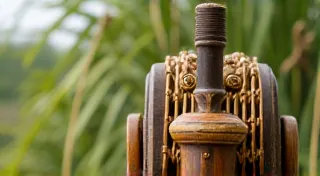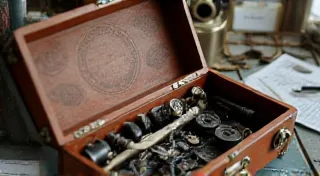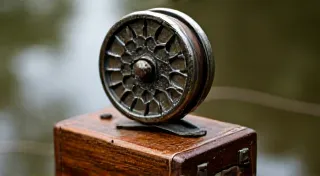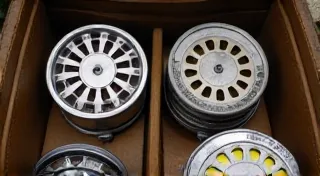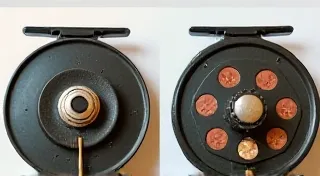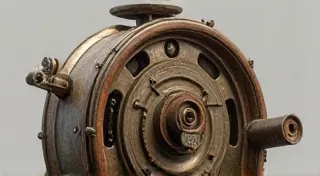Manufacturer Markings: Deciphering Reel Histories
For the burgeoning collector of vintage fishing reels, the journey from enthusiast to knowledgeable expert often hinges on the ability to understand the subtle language etched onto these antique treasures. These aren’t merely random scratches or imperfections; they are manufacturer markings - a vital form of coded communication that reveals a reel's origin, production period, and sometimes even its intended market.
Understanding these markings is more than just a clever trick for impressing fellow collectors. It's a key to unlocking the historical context of a reel, allowing you to appreciate its place in the evolution of fishing gear and the stories behind its creation. This article will guide you through the common markings found on vintage fishing reels, providing insights into what they signify and how to use them in your identification and valuation efforts.
The Basics: What Kind of Markings Can You Expect?
Markings on vintage fishing reels typically fall into several categories: manufacturer names, patent dates, model numbers, country of origin stamps, and occasionally, retailer marks.
Manufacturer Names – The Foundation of Identification
This is the most obvious and crucial type of marking. Names like Pflueger, Hardy, Orvis, South Bend, Shakespeare, and Zero Spool are immediately recognizable to reel collectors. However, many smaller manufacturers and distributors existed, leaving behind less common markings that require more in-depth research. Don't be afraid to consult online forums, collector's guides, and auction records when faced with unfamiliar names. The appearance of the name can also be a clue – a finely engraved name might indicate a higher-end model, while a stamped name could suggest a more mass-produced reel.
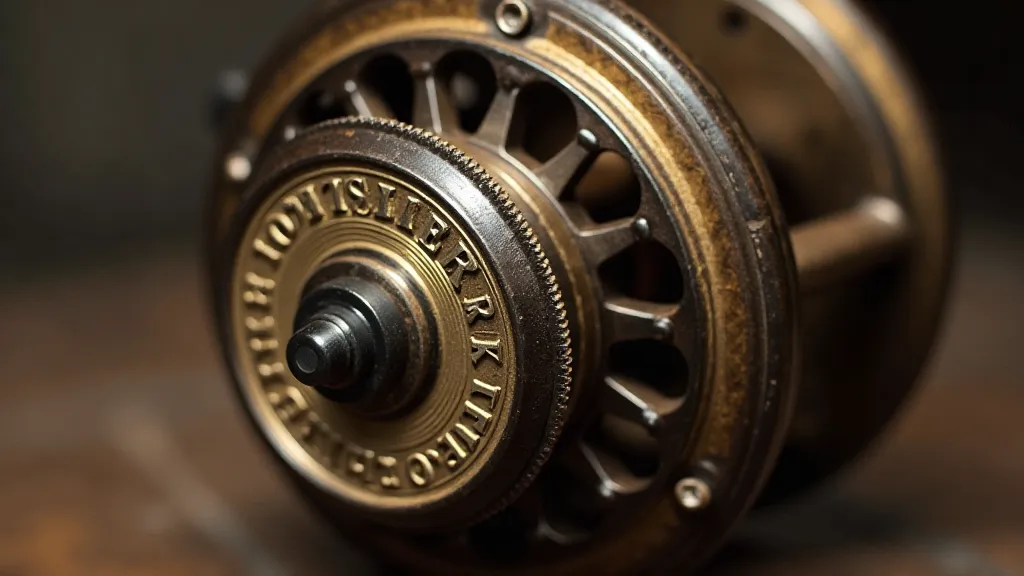
Patent Dates – Chronological Markers
Many vintage reels bear patent dates, and these are extremely valuable for dating a reel. Patent dates indicate when a manufacturer secured legal protection for a particular design or mechanism. These dates don’t always correspond precisely to the reel's production year—manufacturers often continued production of a design even after the patent expired. However, a patent date provides a terminus ad quem (latest possible date) for the reel’s creation. Researching the patent number itself can provide further details about the invention. Online databases of US patents are readily available, enabling you to delve deeper into the technological advancements of the time.
Model Numbers – Identifying Specific Variations
Once you've identified the manufacturer, the next step is often pinpointing the specific model. Reel manufacturers frequently produced numerous variations of a single model, differing in features, materials, and finish. Model numbers—often a combination of numbers and letters—are critical for distinguishing these variations. For instance, a Shakespeare 1400 might be different from a Shakespeare 1401, even though they share a similar overall design.
Country of Origin – A History of Manufacturing
As global trade expanded, many reel manufacturers relocated or outsourced production to different countries. Markings indicating the country of origin (e.g., “Made in Germany,” “Made in Japan,” “Made in USA”) are increasingly common on later vintage reels. This information can impact a reel's value. Reels produced in the United States during the early to mid-20th century often command higher prices than those manufactured elsewhere.
Retailer Marks – Distribution Insights
Occasionally, you’re fortunate enough to find a reel marked with a retailer's name, such as "Sears Roebuck" or “Montgomery Ward”. This indicates that the reel was manufactured specifically for that retailer. These reels can be harder to trace back to the original manufacturer, but can be quite collectible in their own right due to their association with a specific brand and era.
Deciphering Common Markings - A Deep Dive into Manufacturers
Let's examine some prominent manufacturers and the nuances of their markings:
Hardy – British Precision
Hardy reels, hailing from England, are renowned for their exceptional craftsmanship and innovative designs. Hardy markings typically include the “Hardy” name in a distinctive typeface, often accompanied by the “Made in England” stamp. Early Hardy reels might also feature the “Alloy” marking, indicating that the reel's frame was constructed from a non-ferrous metal. Hardy’s numbering system can be complex, but generally reflects the reel’s size and model.
Pflueger – American Innovation
Pflueger, an American manufacturer, produced a vast array of reels, catering to both high-end and budget-conscious anglers. Early Pflueger reels often feature intricate scrollwork and elegant lettering. Later models may use more streamlined designs and stamped markings. Look for markings like "Pflueger" (often with variations in font), "USA," and model numbers that incorporate letters and numbers.

South Bend – A Midwest Giant
South Bend Tackle Company, based in Indiana, was a major player in the American fishing tackle industry. South Bend reels often feature the “South Bend” name prominently displayed, along with model numbers that can be quite specific. Identifying South Bend reels often involves understanding their numbering system, which changed over time. Their reels were known for their sturdy construction and value for money.
Shakespeare – Broad Appeal
Shakespeare, a well-known name in fishing gear, produced reels for a wide range of anglers. Shakespeare markings are generally clear and easy to read, often including the "Shakespeare" name, "Made in USA" (for US-produced reels), and model numbers. Shakespeare reels spanned from inexpensive models to high-end fly reels, catering to diverse fishing preferences.
Beyond the Markings: Contextual Clues
While manufacturer markings are the primary source of information, don’t neglect other contextual clues. The reel's condition, the type of finish, the materials used, and any accessories included can provide valuable insights. Also consider the reel’s overall design – compare it to known examples in collector's guides and online resources. The presence or absence of certain features, like a drag system or a clicker mechanism, can help narrow down the possibilities.
For collectors deeply interested in the history and beauty of angling equipment, understanding the nuances of materials and construction is paramount. The evolution of reel design is inextricably linked to advancements in metallurgy and manufacturing processes. Many collectors are drawn to the elegance and performance of bamboo reels, appreciating their unique character and craftsmanship.
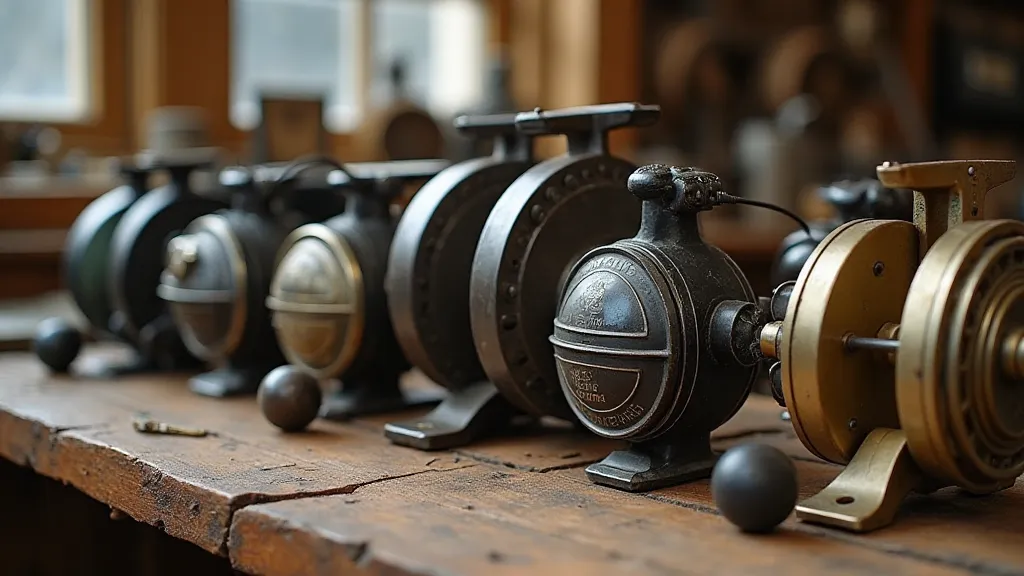
The Rarity of Left-Handed Reels
The configuration of a reel – whether it’s a right-handed or left-handed model – can significantly impact its collectibility and value. While the vast majority of reels were manufactured for right-handed anglers, left-handed reels exist, albeit in far smaller numbers. The reasons for this scarcity are varied, ranging from manufacturing costs to consumer demand. Finding and identifying left-handed reels often requires specialized knowledge and a keen eye for detail, making them highly prized by collectors.
Understanding Reel Condition: A Key to Valuation
Beyond the markings and manufacturer details, the overall condition of a vintage reel plays a vital role in its value. Reels in pristine, unused condition are rare and command the highest prices. However, many vintage reels have been used and show signs of wear. Factors like corrosion, scratches, and missing parts can significantly impact a reel's value. Collectors often use a grading system to assess the condition of vintage reels, taking into account factors like finish, mechanical function, and originality. Understanding reel condition is therefore an essential skill for any serious collector.
Conclusion: The Continuous Learning Process
Deciphering manufacturer markings on vintage fishing reels is an ongoing process. It requires patience, research, and a willingness to learn. Each reel tells a story, and the ability to understand its markings unlocks that story, deepening your appreciation for these remarkable pieces of angling history. Embrace the challenge, connect with other collectors, and continue expanding your knowledge – the world of vintage fishing reels awaits!
